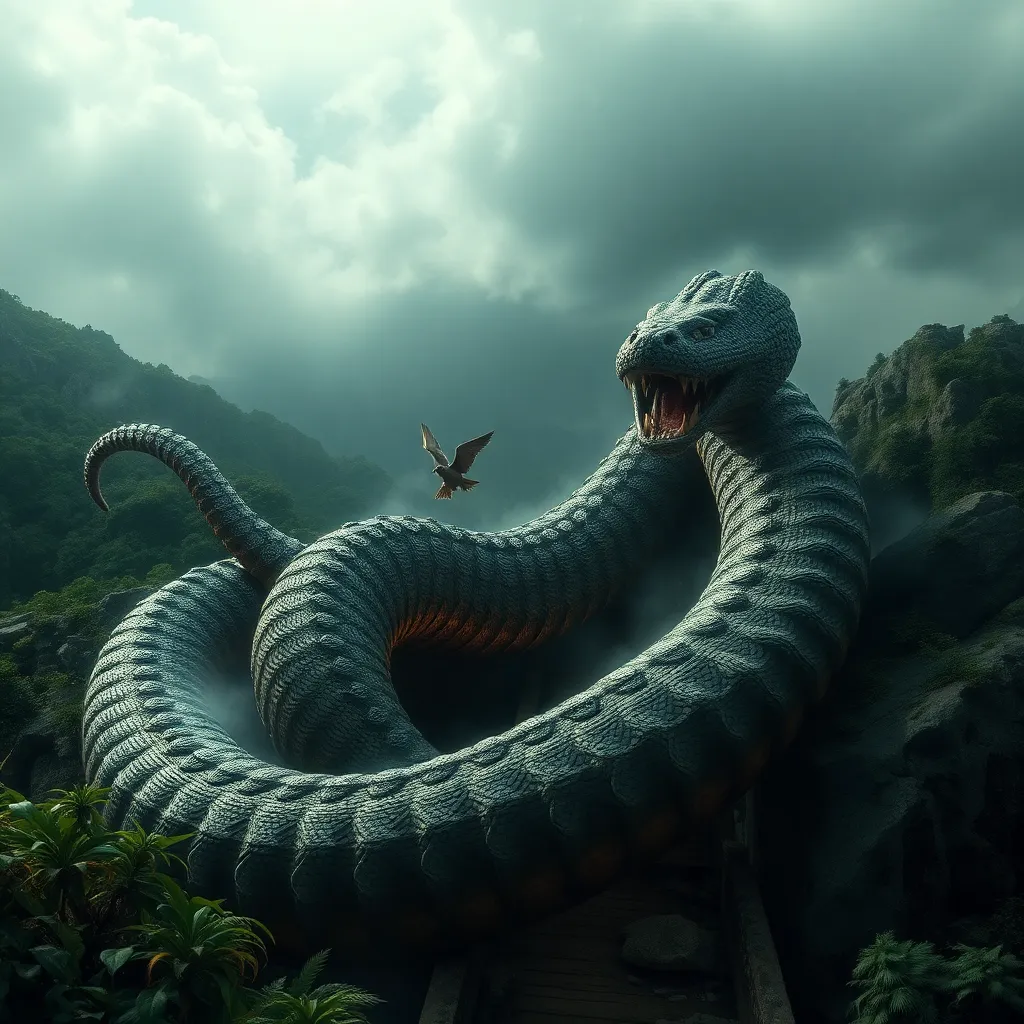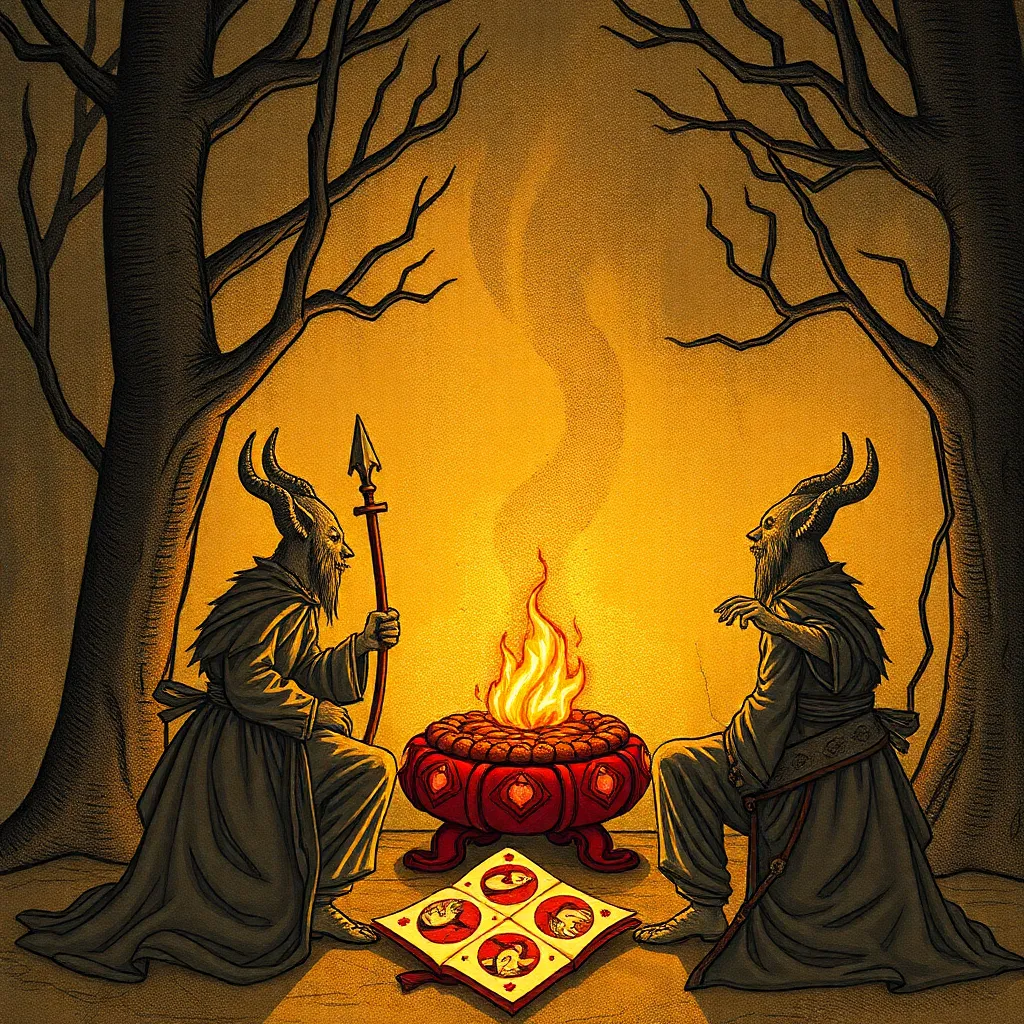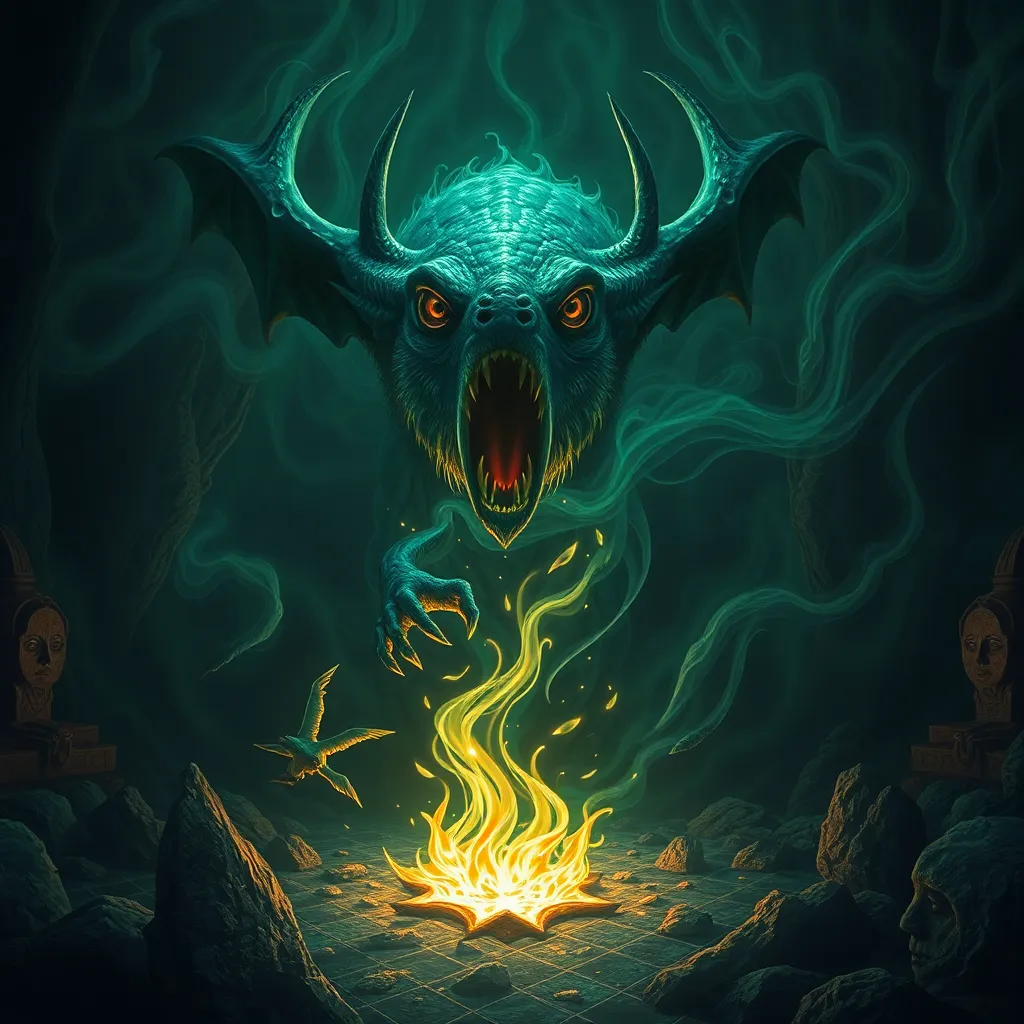Cipactli and the World Serpent: Exploring Parallels in Global Mythology
I. Introduction
In the vast tapestry of global mythology, few figures are as compelling as Cipactli, the primordial earth monster of Aztec legend. This creature is not just a monster; it embodies the ancient concepts of creation and chaos. Similarly, the World Serpent is a recurring archetype across various cultures, representing the duality of existence and the cyclical nature of life. This article aims to explore the parallels and connections between Cipactli and the World Serpent, revealing the universal themes that resonate through these mythological figures.
II. Cipactli: The Aztec Earth Monster
Cipactli, often depicted as a monstrous crocodile or dragon, plays a crucial role in Aztec creation myths. According to legend, she was one of the first beings to exist, emerging from the primordial waters. Her body was so vast that it spanned the earth, and her form is often associated with both the earth itself and the chaos that preceded creation.
Characteristics of Cipactli:
- Primordial creature: Represents the raw, untamed forces of nature.
- Shape-shifting abilities: Can take on various forms, symbolizing adaptability and unpredictability.
- Symbol of chaos: Embodies the disorder that existed before the cosmos was formed.
In Aztec mythology, Cipactli is vital to the creation narrative. The gods Tezcatlipoca and Quetzalcoatl conspired to create the world from her body. They defeated Cipactli, and her dismembered body became the land, mountains, and rivers. This act of creation from destruction underscores the Aztec belief in the cyclical nature of life and death.
Cipactli is also a symbol of fertility and sustenance, as her flesh nourished the earth. In Aztec culture, she represents the interconnectedness of life, death, and rebirth, serving as a reminder of the balance required to maintain harmony in the world.
III. The World Serpent: A Universal Archetype
The World Serpent is a universal archetype found in various mythologies around the globe. This figure often embodies themes of chaos, creation, and the cyclical nature of existence.
Characteristics of the World Serpent:
- Embodiment of chaos: Represents the chaotic forces that precede creation.
- Symbol of life and death: Often associated with both destructive and generative powers.
- Guardian of the cosmos: Frequently depicted as a being that encircles the world or the universe.
Examples of World Serpent figures include:
- Jörmungandr: The Midgard Serpent in Norse mythology, who encircles the earth and is destined to fight Thor during Ragnarok.
- Quetzalcoatl: In Mesoamerican traditions, he is a feathered serpent associated with wind, air, and learning.
- Ouroboros: An ancient symbol depicting a serpent eating its own tail, representing the cycle of life and death.
The World Serpent serves as a powerful symbol of chaos and creation, illustrating the belief that destruction is often a precursor to new beginnings.
IV. Creation Myths: Cipactli and the World Serpent
Both Cipactli and various World Serpent figures play pivotal roles in their respective creation myths. These stories often share common themes, including destruction leading to rebirth and the cyclical nature of existence.
In the case of Cipactli, her defeat by the gods leads to the formation of the world. This act of creation from chaos reflects a deep understanding of the natural world and its processes. Similarly, in Norse mythology, Jörmungandr’s eventual conflict with Thor symbolizes the battle between order and chaos, culminating in significant transformation.
Common Themes in Creation Myths:
- Destruction as a precursor to creation.
- The cyclical nature of life, death, and rebirth.
- Nature as a powerful force that shapes existence.
These myths not only provide insights into the cultures from which they originate but also reflect universal human experiences and questions about existence.
V. Symbolism and Interpretation
The narratives surrounding Cipactli and the World Serpent encapsulate a duality of creation and destruction. This duality invites psychological and philosophical interpretations, prompting reflections on the nature of existence.
Key Symbolic Interpretations:
- Creation and destruction are intertwined: One cannot exist without the other.
- Chaos can lead to new order and growth.
- Myths reflect human understanding of nature’s power and unpredictability.
The impact of these myths is profound, shaping human perception of nature and existence. They offer a framework for understanding life’s complexities, encouraging a deeper appreciation for the natural world and our place within it.
VI. Cultural Influence and Legacy
The stories of Cipactli and the World Serpent have left indelible marks on art, literature, and modern storytelling. These myths continue to inspire contemporary creators, serving as metaphors for humanity’s struggles and triumphs.
Influence on Culture:
- Art: Visual representations of serpents and earth monsters in various artistic traditions.
- Literature: Themes of chaos and creation appear in works ranging from ancient texts to modern novels.
- Film and Media: Serpent figures are often used to symbolize conflict, transformation, or the unknown.
In contemporary discussions about nature and humanity’s place within it, these myths remain relevant. They serve as cautionary tales about the consequences of disrupting natural balance and remind us of our interconnectedness with the earth.
VII. Comparative Mythology: Bridging Cultures
Studying the parallels in global mythology fosters a deeper understanding of diverse cultures. By examining the similarities between figures like Cipactli and the World Serpent, we can appreciate the shared human experience that transcends geographical boundaries.
Significance of Comparative Mythology:
- Enhances cultural understanding and appreciation.
- Reveals common themes and archetypes that resonate across civilizations.
- Encourages dialogue and exchange between cultures.
The role of mythology in bridging cultures is vital, as it allows for the exploration of fundamental questions about existence, nature, and the human experience.
VIII. Conclusion
In summary, the exploration of Cipactli and the World Serpent reveals deep parallels in global mythology. Both figures embody themes of creation and destruction, chaos and order, reflecting the values and beliefs of the cultures from which they originate. Their enduring significance invites us to further explore and appreciate the rich tapestry of mythology across the globe. By understanding these narratives, we gain insights into our own existence and the natural world, fostering a greater sense of connection with both.



